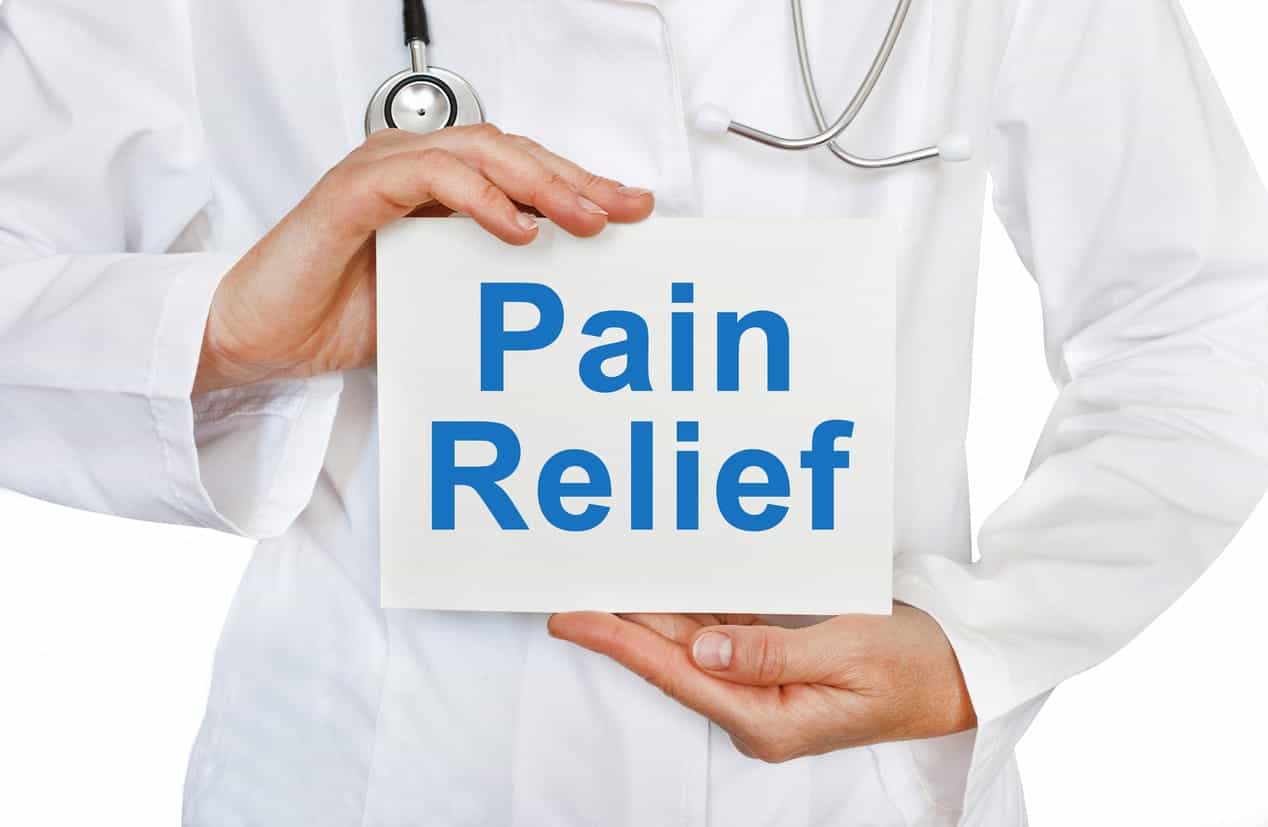Prescription or over-the-counter. Off-label
this medication may not be approved by the fda for the treatment of this condition. An emergency use authorization (eua) allows the fda to authorize unapproved medical products or unapproved uses of approved medical products to be used in a declared public health emergency when there are no adequate, approved, and available alternatives. Expanded access
expanded access is a potential pathway for a patient with a serious or immediately life-threatening disease or condition to gain access to an investigational medical product (drug, biologic, or medical device) for treatment outside of clinical
trials
when no comparable or satisfactory alternative therapy options are available.

More on Pain Management
Opioids are medications that are sometimes prescribed to
treat
pain. As with all medications, opioids have benefits and risks, and sometimes potentially serious side effects. The opioid overdose crisis is very complex, and untreated pain is a contributing factor. Health canada firmly believes the medical needs of patients, including which prescription medications they should be taking, are best determined through shared decision-making between the patient and their health provider based on the unique needs of the individual.
 Information on talking to your doctor about prescribed opioids. Health canada's statement on opioids and pain management (november 2022).
Information on talking to your doctor about prescribed opioids. Health canada's statement on opioids and pain management (november 2022).
Weight management takes on extra importance for those of us faced with chronic pain. Learn how you can combat extra weight with exercise and diet.
Pain is a personal sensation. It can’t be measured objectively, and yet it can have a powerfully negative effect on mood, interactions with others, and physical functioning. It can also be isolating and poorly understood by others. When pain isn’t properly managed, it can sometimes devastate people’s lives. Most patients who visit zacharia isaac, md , a mass general brigham spine care and pain management specialist, are in chronic pain. Dr. Isaac is chief of spine care and pain management at spaulding rehabilitation hospital and associate chairman of physical medicine and rehabilitation at brigham and women’s hospital. His patients often see him when their backs or necks may have been hurting for months, even years.
Chronic pain is a difficult condition. Unfortunately, painkillers are unlikely to be the answer. They can also cause more problems. Although stronger painkillers can provide short-term pain relief, they have mistakenly been prescribed for long-term pain management. Long-term pain arises through many different and varied mechanisms, and drugs tend not to work effectively on these. High doses of painkiller medicines taken for long periods are unlikely to give better pain relief and are associated with harmful effects. Benefits should outweigh the risks, and therefore, the surgery is often reluctant to prescribe strong painkilling medication to patients with chronic pain.
Alternative Therapy For Pain Management
Chronic pain adversely affects the quality of life for patients with all stages of cancer. 50 , 51 although cancer-related pain is often the largest contributor to poor quality of life, patients with cancer are also commonly affected by anorexia and nausea, especially when undergoing chemotherapy treatment. Consequently, cbps have long been heralded as appropriate for oncology patients because of their purported benefits for providing analgesia, stimulating appetite, and reducing emesis. 52 , 53 although the fda has approved the use of certain cbps for the treatment of nausea and vomiting, anorexia, and weight loss, no cbps are approved for the treatment of cancer-related pain.
The role of topical analgesics in the management of localised pain has been noted. Professional bodies have produced guidelines, on the use of topical nsaids, such as ketoprofen and diclofenac, as first-line choice in the treatment of osteoarthritis 53 and may be a safer alternative to oral nsaids in older adults. Topical capsaicin and lidocaine should only be considered as second-line treatments for neuropathic pain because of their limited efficacy in localised neuropathic pain. Transdermal drugs can be very effective for pain treatment, however, in those aged above 85 years (the older) or frail patients with significant subcutaneous tissue loss, absorption can vary making it more difficult to predict efficacy.
Given the ongoing challenges of chronic pain management coupled with the consequences of the opioid epidemic, pain management practitioners and their patients are searching for effective and safer alternatives to opioids to alleviate pain. With the legalization of marijuana in many states and resulting cultural acceptance of this drug for recreational and medical use, there has been an increased interest in using cannabis for a myriad of medical problems, including pain. Cannabis (most commonly obtained from the cannabis indica and cannabis sativa plants) has three major components: cannabinoids, terpenoids, and flavonoids. While there are over a hundred different cannabinoids, the two major components are tetrahydrocannabional (thc) and cannabidiol (cbd).
Education is an essential element of psychological pain treatment ( 55 ) since it teaches patients how to handle a problematic condition. Talk therapy, relaxation training, stress management and pain coping skills training are the most frequent psychological treatments. You can obtain the assistance and counselling of a psychiatrist or psychologist through talk therapy. Cognitive therapy helps to alter the facts, ideas, and attitudes to change the amount of pain you feel. Relaxation training teaches you how to achieve a physiological state of profound relaxation that help you relieve pain. You may discover how your ideas impact your stress level and how to build a healthy response to difficult situations via stress management.
Pain Management Treatment Overview
Acupuncture. Once seen as bizarre, acupuncture is rapidly becoming a mainstream treatment for pain. Studies have found that it works for pain caused by many conditions, including fibromyalgia , osteoarthritis , back injuries, and sports injuries. How does it work? no one's quite sure. It could release pain-numbing chemicals in the body. Or it might block the pain signals coming from the nerves. "i think there's good scientific evidence for acupuncture and i prescribe it," says f. Michael ferrante, md, director of the ucla pain management center in los angeles. "the nice thing is that even if it doesn't work, it doesn't do any harm.
2000: discovered that ion channels—specialized proteins in nerve cells—are heavily implicated in neuropathic pain 2008: established the va pain research, informatics, multimorbidities, and education (prime) center to study the interaction between pain and associated chronic conditions 2014: implemented the va overdose education and naloxone distribution program 2015: determined that va's stepped-care model of pain management significantly reduced disability and pain interference and severity in veterans with chronic pain 2016: established the musculoskeletal diagnosis cohort, made up of more than 5 million veterans in va care, to characterize variations in pain, treatment, and outcomes 2017: partnered with other federal agencies to fund $81 million in new research on nondrug treatment of pain for military personnel and veterans.
8th international congress america and europe – great pain management leaders san francisco de quito, ecuador, sudamerica the ecuadorian society for the study and treatment of pain (seetd) is pleased […] read more.
The integrative approach to chronic pain management is being more widely accepted worldwide. Among its most popular components is massage therapy. Massage therapy helps relieve stress and tension in the body thanks to its relaxing effects. As such, it can be used to treat chronic conditions like lower back pain, headaches, fibromyalgia, sciatica, and even carpal tunnel syndrome. It can even impact one’s sleep quality, resulting in less fatigue and more productivity. The most significant advantage of massage therapy is its non-invasiveness. It has no side effects and does not come with any attendant health risks. Therefore, it can be incorporated into a treatment plan that includes medication and physical exercises for an overall approach to chronic pain relief.
Get some gentle exercise
30 minutes a day of low-intensity activity, such as walking or gentle swimming, may help you feel less discomfort. Some people find that exercise relieves their stress, which is vital to manage if you have chronic pain. You can speak to your specialist to know the best chronic neck pain relief exercises.
There’s no shortcut for curing a stiff neck. Stretching, gentle heat and pain relievers are usually the best ways to decrease neck stiffness quickly. For long-term neck pain relief and prevention of neck stiffness, improve your lifestyle by: achieving and maintaining a healthy weight exercising regularly, incorporating strengthening, flexibility and cardiovascular exercises managing stress with healthy coping strategies such as meditation, exercise, talk therapy or journaling quitting smoking, which can lead to disc degeneration and poor healing.
Comments
Post a Comment